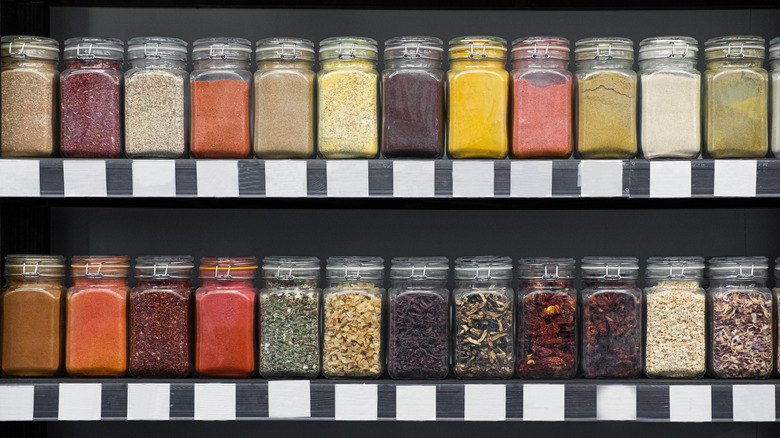The Spices You Must Have In Your Pantry, According To Gordon Ramsay
We may receive a commission on purchases made from links.
There may be a strong dilemma in your head when you arrive at the grocery store to buy ingredients for a new recipe, and you look at the price of a spice jar that would never be used otherwise. You may think to yourself, "Is this mulled wine worth spending $10 on a jar of star anise," or "Do I need whole vanilla beans for these cookies?" To possibly avoid this dilemma, you should have a well-rounded spice rack. We all know that salt and pepper are essential, but it can be tough to know which spices to keep on hand.
It can be tempting to buy a few spices in bulk online so you can save some money, but Bon Appétit recommends buying only 1-2 ounces at a time since they lose their potency after a year or two. Gordon Ramsay echoes this sentiment in his MasterClass on essential spices. He recommends cleaning out your spice rack at least every 12 months. It may be time to toss that nutmeg you used in the eggnog three Christmases ago. When you do throw them away, consider restocking your pantry with Ramsay's 17 essential spices.
Ramsay's favorites include salt and pepper
The Gordon Ramsay list of spice cabinet essentials on MasterClass is not comprehensive; it is more of a starter kit. The spices heavily overlap with similar lists from Food & Wine and Bon Appétit, so there seems to be somewhat of a consensus across the culinary community. The list starts with the bases for flavor we probably all know — salt and pepper. Ramsay specifies that he doesn't use table salt, only sea salt like French fleur de sel or Maldon salt for maximum flavor. He also recommends black peppercorns because they have the strongest flavor compared to green and white peppercorns.
Next, stock up your spice rack with warm spices like cardamom, nutmeg, cinnamon, and cloves. When you're looking to add heat to a dish, he recommends keeping chili powder and paprika on hand. Turmeric, mustard seeds, coriander, ginger, and cumin can add complexity to dishes from other cuisines. Fennel seeds and star anise both add a licorice flavor to dishes. Fennel seeds are more often used in savory dishes, while star anise is slightly sweet. A couple of spices that may not currently reside on your rack include fenugreek and sumac. Fenugreek is a Mediterranean seed used in the Moroccan spice mix ras el hanout. Last but not least, sumac adds a tangy, lemony flavor to many Middle Eastern dishes.
When it's time to clear your spices, make sure you add these 17 flavors to your list.

